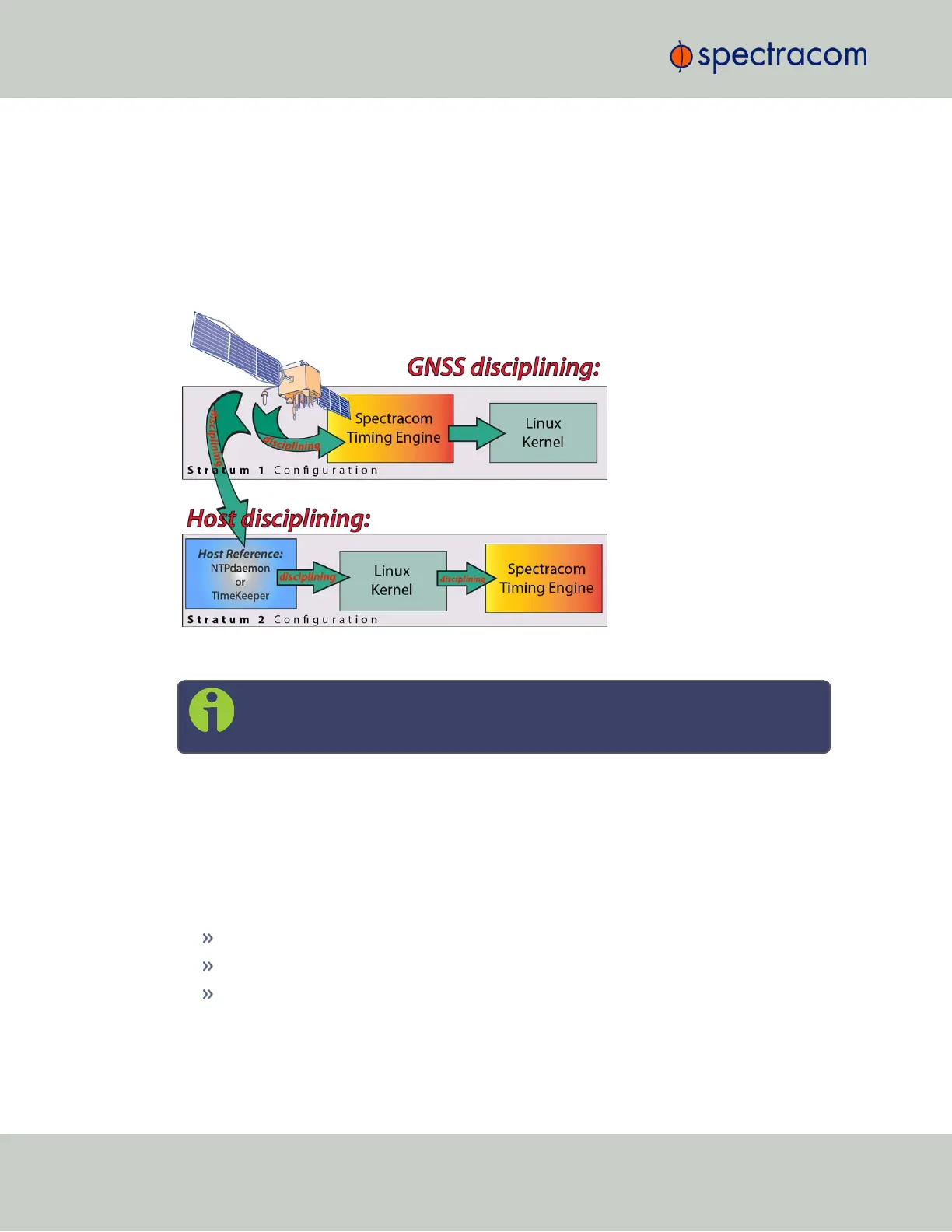oscillator is steered to maintain a very accurate 10 MHz output. If no valid 1PPS input ref-
erences are present (or input references are present but not considered valid), the oscillator will
be in Freerun mode instead.
If no external input reference such as GNSS, IRIG, etc. is available (or is temporarily lost),
SecureSync may become an NTP Stratum2 or higher reference. If so configured, SecureSync
can use a reference such as an NTP daemon, referred to as a Host Reference. If the Host Refer-
ence becomes active, it will automatically take over the disciplining of the oscillator. This built-in
functionality is referred to as Host Disciplining.
Figure 3-2: Host disciplining
Note: Host disciplining is NOT supported by SecureSync units that are equipped
with a Rubidium oscillator.
The Oscillators Settings page provides the user with some control of the disciplining process.
This page is also used to configure the length of time SecureSync is allowed to remain in the
Holdover mode when all references are lost.
3.5.1 Oscillator Types
SecureSync units are available with different types of internal oscillators:
TCXO (Temperature-Compensated Crystal Oscillator)
one of two different types of OCXO (Oven-Controlled Crystal Oscillator) oscillators, or
one of two different types of Rb (Rubidium) oscillators.
The two different types of OCXO oscillators are a precision OCXO oscillator and a high-pre-
cision (low phase noise) OCXO oscillator. The two different types of Rubidium oscillators are a
precision Rubidium oscillator and a low-phase noise Rubidium oscillator. All of these internal
214
CHAPTER 3 • SecureSync User Reference Guide Rev. 26
3.5 Managing the Oscillator
